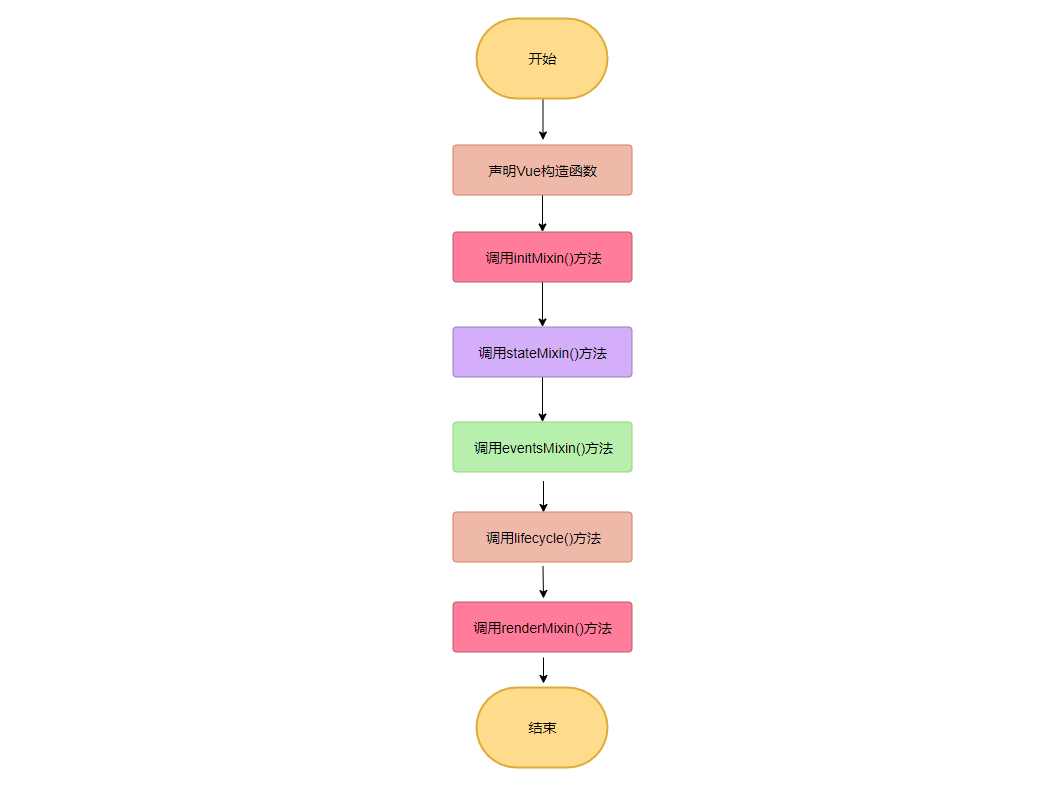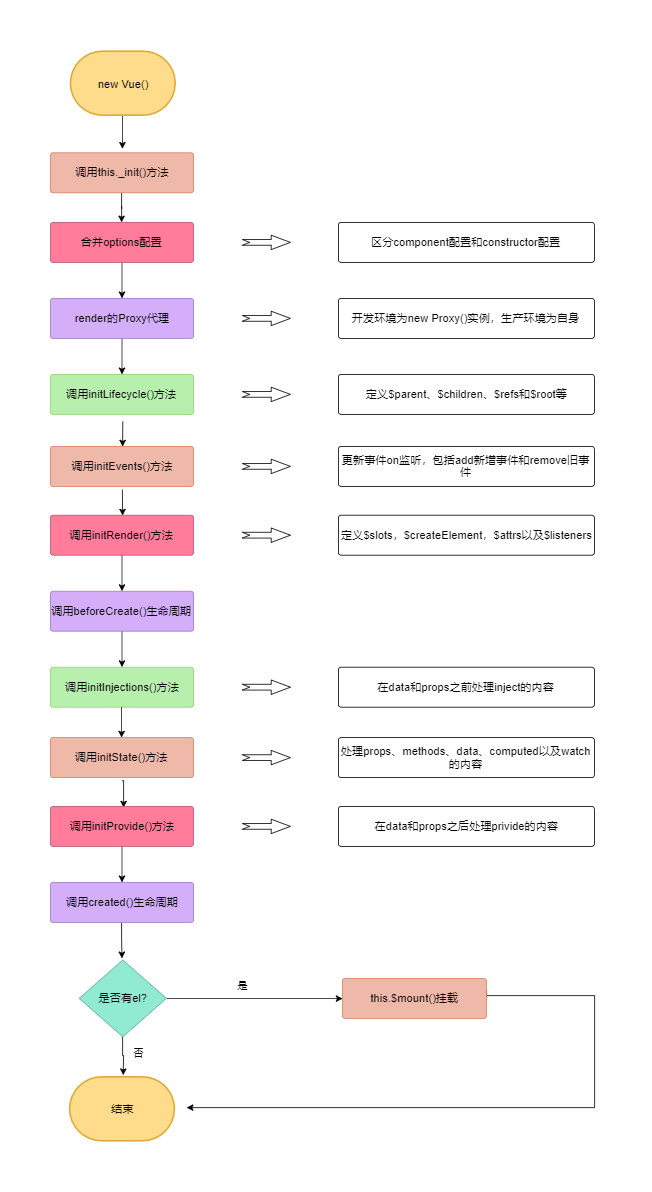initMixin流程
在上一节我们讲到了initGlobalAPI的整体流程,这一节,我们来介绍initMixin的整体流程。首先,我们把目光回到src/core/index.js文件中:
import Vue from './instance/index'
import { initGlobalAPI } from './global-api/index'
initGlobalAPI(Vue)
export default Vue
我们发现,它从别的模块中引入了大Vue,那么接下来我们的首要任务就是揭开Vue构造函数的神秘面纱。
在看src/core/instance/index.js代码之前,我们发现instance目录结构如下:
|-- instance
| |-- render-helpers # render渲染相关的工具函数目录
| |-- events.js # 事件处理相关
| |-- init.js # _init等方法相关
| |-- inject.js # inject和provide相关
| |-- lifecycle.js # 生命周期相关
| |-- proxy.js # 代理相关
| |-- render.js # 渲染相关
| |-- state.js # 数据状态相关
| |-- index.js # 入口文件
可以看到,目录结构文件有很多,而且包含的面也非常杂,但我们现在只需要对我们最关心的几个部分做介绍:
events.js:处理事件相关,例如:$on,$off,$emit以及$once等方法的实现。init.js:此部分代码逻辑包含了Vue从创建实例到实例挂载阶段的所有主要逻辑。lifecycle.js:生命周期相关,例如:$destroy、$activated和$deactivated。state.js:数据状态相关,例如:data、props以及computed等。render.js:渲染相关,其中最值得关注的是Vue.prototype._render渲染函数的定义。
在介绍了instance目录结构的及其各自的作用以后,我们再来看入口文件,其实入口文件这里才是Vue构造函数庐山真面目:
import { initMixin } from './init'
import { stateMixin } from './state'
import { renderMixin } from './render'
import { eventsMixin } from './events'
import { lifecycleMixin } from './lifecycle'
import { warn } from '../util/index'
function Vue (options) {
if (process.env.NODE_ENV !== 'production' &&
!(this instanceof Vue)
) {
warn('Vue is a constructor and should be called with the `new` keyword')
}
this._init(options)
}
initMixin(Vue)
stateMixin(Vue)
eventsMixin(Vue)
lifecycleMixin(Vue)
renderMixin(Vue)
export default Vue
代码分析:
Vue构造函数其实就是一个普通的函数,我们只能通过new操作符进行访问,既new Vue()的形式,Vue函数内部也使用了instanceof操作符来判断实例的父类是否为Vue构造函数,不是的话则在开发环境下输出警告信息。- 除了声明
Vue构造函数,这部分的代码也调用了几种mixin方法,其中每种mixin方法各司其职,处理不同的内容。
从以上代码中,我们能得到src/core/instance/index.js文件非常直观的代码逻辑流程图:

接下来我们的首要任务是弄清楚_init()函数的代码逻辑以及initMixin的整体流程。我们从上面的代码发现,在构造函数内部会调用this._init()方法,如下:
// 实例化时,会调用this._init()方法。
new Vue({
data: {
msg: 'Hello, Vue.js'
}
})
然后,我们在init.js中来看initMixin()方法是如何被定义的:
export function initMixin (Vue) {
Vue.prototype._init = function (options) {
// 省略代码
}
}
我们可以发现,initMixin()方法的主要作用就是在Vue.prototype上定义一个_init()实例方法,接下来我们来看一下_init()函数的具体实现逻辑:
Vue.prototype._init = function (options) {
const vm = this
// 1. 合并配置
if (options && options._isComponent) {
initInternalComponent(vm, options)
} else {
vm.$options = mergeOptions(
resolveConstructorOptions(vm.constructor),
options || {},
vm
)
}
// 2.render代理
if (process.env.NODE_ENV !== 'production') {
initProxy(vm)
} else {
vm._renderProxy = vm
}
// 3.初始化生命周期、初始化事件中心、初始化inject,
// 初始化state、初始化provide、调用生命周期
vm._self = vm
initLifecycle(vm)
initEvents(vm)
initRender(vm)
callHook(vm, 'beforeCreate')
initInjections(vm)
initState(vm)
initProvide(vm)
callHook(vm, 'created')
// 4.挂载
if (vm.$options.el) {
vm.$mount(vm.$options.el)
}
}
因为我们是要分析initMixin整体流程,对于其中某些方法的具体实现逻辑会在后续进行详细的说明,因此我们可以从以上代码得到initMixin的整体流程图。
